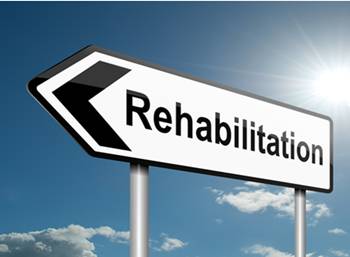More than 7 million Americans have survived a stroke. After a stroke, the recovery process can take days, weeks or even years. Staying healthy throughout the post-stroke process requires a multi-faceted approach.

You can begin this process by finding out which rehabilitation programs are available and which medications you can take to prevent recurrent strokes, and by preparing yourself for the future by recognizing warning sign of a stroke.
Rehabilitation Programs
Maintaining your health after a stroke may require that you participate in a rehabilitation program that provides speech therapy, physical therapy and the tools you need to become as independent as possible
In physical therapy, you will learn everyday skills, increasing your flexibility, strength, control and endurance. Programs are tailored toward individual patients, accounting for varying recovery speeds and medical needs.
Stroke recovery is managed by a team of professionals who evaluate factors such as age, degree of abilities and overall health, to determine the best treatment. This team is made up of one or more of the following: Neurologist, Rehabilitation Nurse, Recreation Therapist, Dietician, Occupational Therapist, Physical Therapist, Case Manager and Social Worker.
Stroke Prevention Medication
Your doctor may prescribe medications like antiplatelet agents and anticoagulants to reduce your risk of having another stroke. Antiplatelets, like aspirin, prevent blood clots from forming. Anticoagulants, like Pradaxa and warfarin, prevent the clotting of blood and reduce the size of existing blood clots.
If your doctor chooses warfarin, you will need to undergo regular blood tests and maintain certain diet restrictions. If your doctor chooses Pradaxa, it’s important to know that it has been linked to serious side effects like bleeding and heart problems.
Because warfarin and Pradaxa both thin the blood, even minor bumps and bruises can escalate to serious bleeding events. With warfarin, doctors can administer vitamin K to stop the bleeding. Unfortunately, there is no antidote for Pradaxa. In 2011, more than 540 people lost their lives after using Pradaxa. Talk to your doctor about which blood thinner is the best choice for you.
Recognizing Stroke Symptoms
By recognizing the symptoms of stroke, you’ll be able to seek immediate treatment next time and increase your chances of survival and recovery.
Here are some stroke warning signs:
- Extreme dizziness
- Diminished or complete loss of vision in one eye
- Sudden headache
- Trouble understanding others
- Trouble speaking
- Sudden numbness or weakness on the face or limbs on one side
If you or someone you know experiences these symptoms,call for emergency medical help immediately.
Alanna Ritchie is a content writer for Drugwatch.com, specializing in news about prescription drugs, medical devices and consumer safety.

Leave a Reply